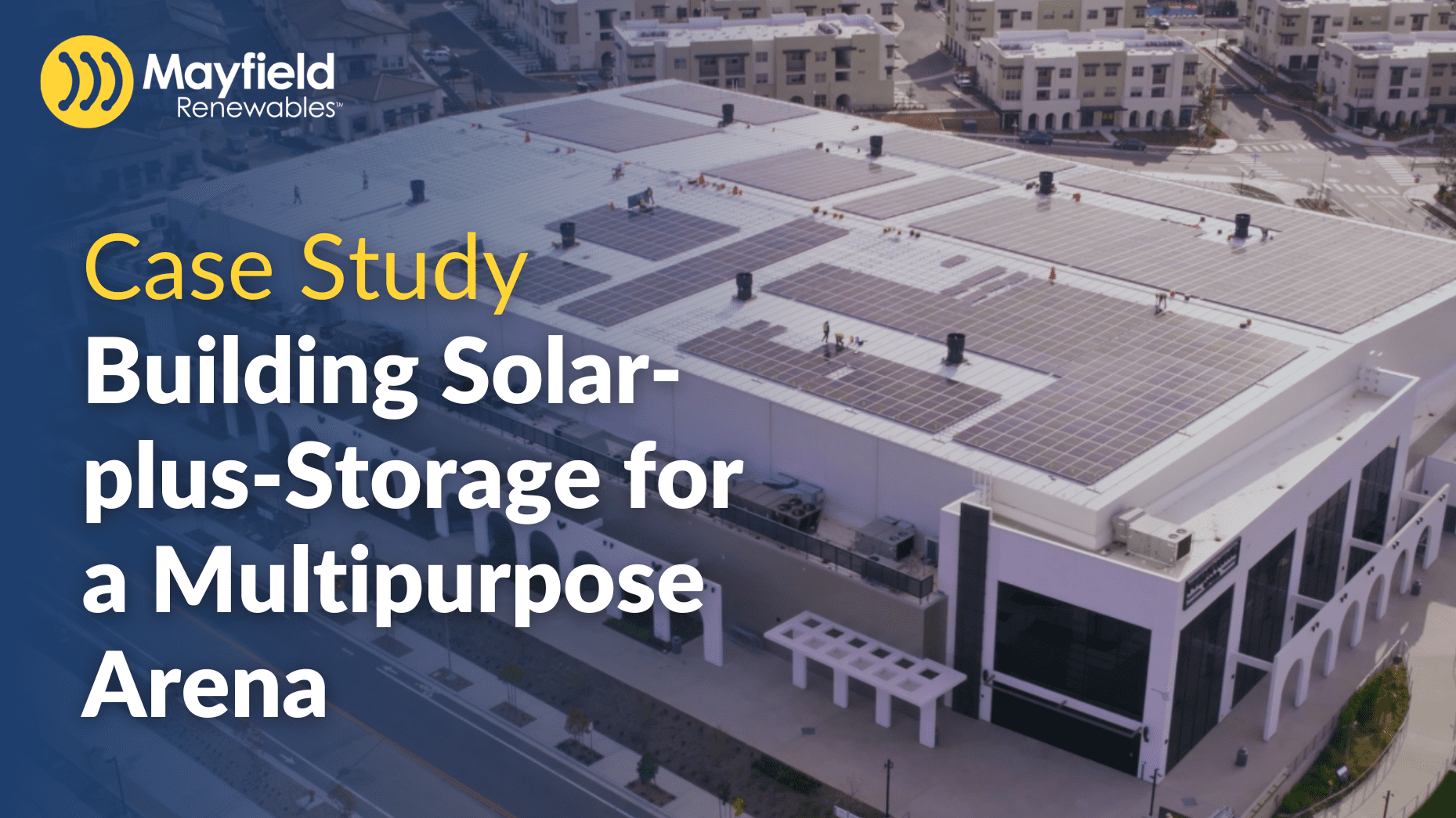Technical Article
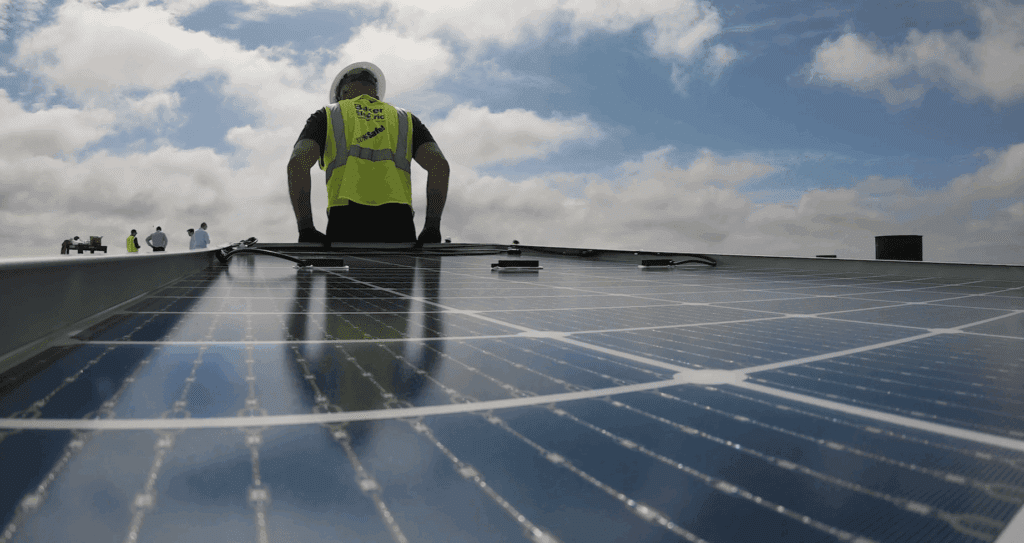
When designing a 7,500-seat arena in a region with elevated electricity prices and abundant sunlight, contemplating solar panels and storage solutions is wise.
This was precisely the approach taken by the Frontwave Arena team while strategizing their versatile entertainment facility in the City of Oceanside, located in San Diego County. The arena’s distinct site in El Corazon, a 465-acre area devoted to habitat preservation and recreation, introduced another objective: Creating a building that is as environmentally friendly as possible.
A substantial rooftop solar system, combined with a significant energy storage solution, now enables Frontwave Arena to optimize the economic benefits of solar while functioning sustainably — all the while ensuring an exceptional experience for fans attending San Diego Sockers and Clippers home matches, as well as concerts and community gatherings. Here’s how they accomplished it:
One Project, Multiple Partners
Establishing a solar-plus-storage solution requires collective effort: This system is owned and managed by DSD Renewables through a power purchase agreement (PPA) with Frontwave Arena. At the project’s inception in 2023, DSD engaged Baker Electric as the engineering, procurement, and construction (EPC) partner and Mayfield Renewables as the principal electrical engineer.
Mayfield, in turn, worked closely with every stakeholder, as well as San Diego Gas & Electric (the local utility provider) and the City of Oceanside (the authority having jurisdiction, AHJ) to formulate a comprehensive plan set and provide electrical PE certifications.
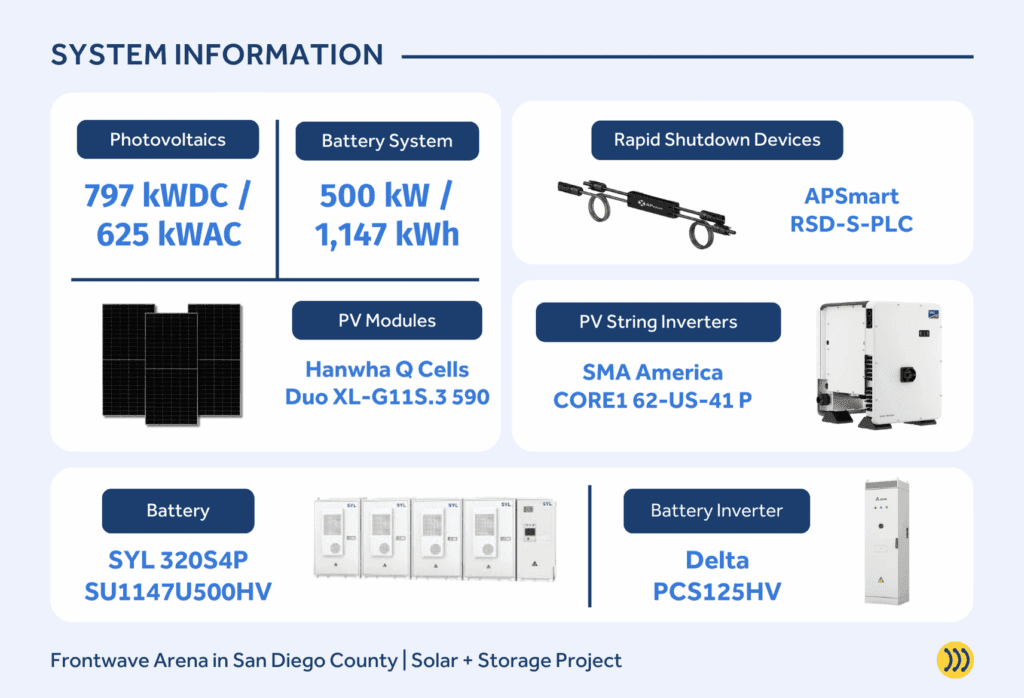
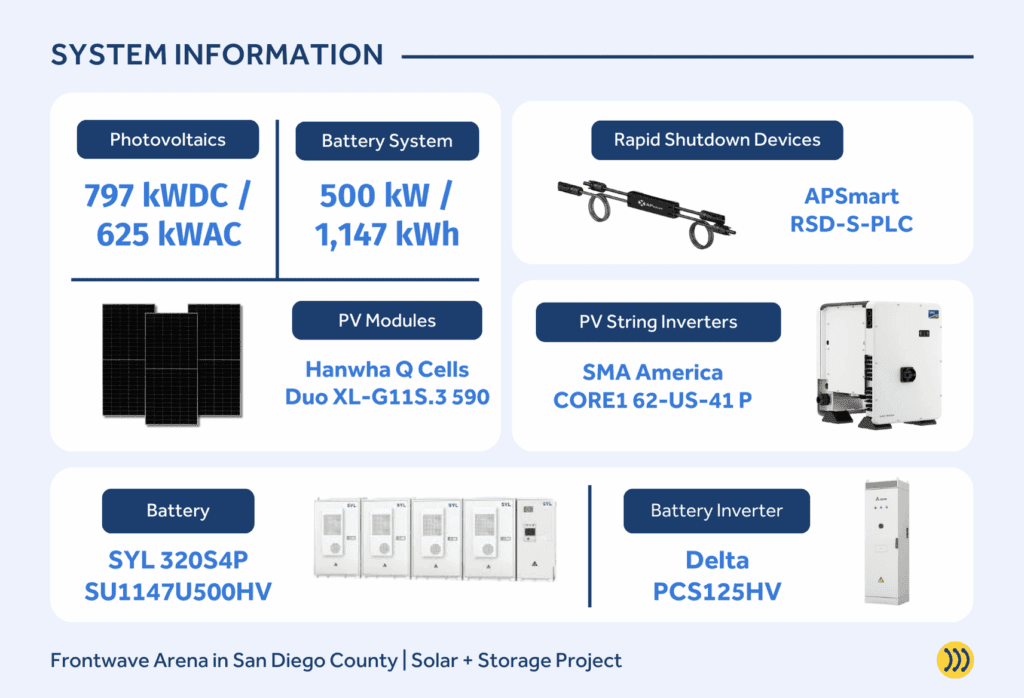
Project Goals
Considering the geographical perks of the sunny site and the financial limitations due to high utility bills, Frontwave’s management identified three primary objectives:
- Maximize the advantage of solar: Net Metering 3.0 has significantly lessened the value of solar exports in California. Therefore, rather than selling surplus solar energy back to the grid for minimal returns, it was more economically advantageous to store that excess energy in a battery for future use.
- Decrease reliance on grid electricity: Electricity from the grid can represent a significant cost for commercial establishments. Frontwave aimed to utilize the available rooftop area with solar panels to generate as much “local” energy as possible. Since DSD Renewables owns and runs the system through a PPA, Frontwave pays a fixed, predetermined price for its solar electricity.
- Lower demand charges: San Diego Gas & Electric imposes some of the highest demand charges in the U.S. during the hours of 4:00 to 9:00 pm. Frontwave chose to minimize its peak electricity demand by utilizing its batteries (charged from solar);
electricity generated earlier in the day) within that timeframe.
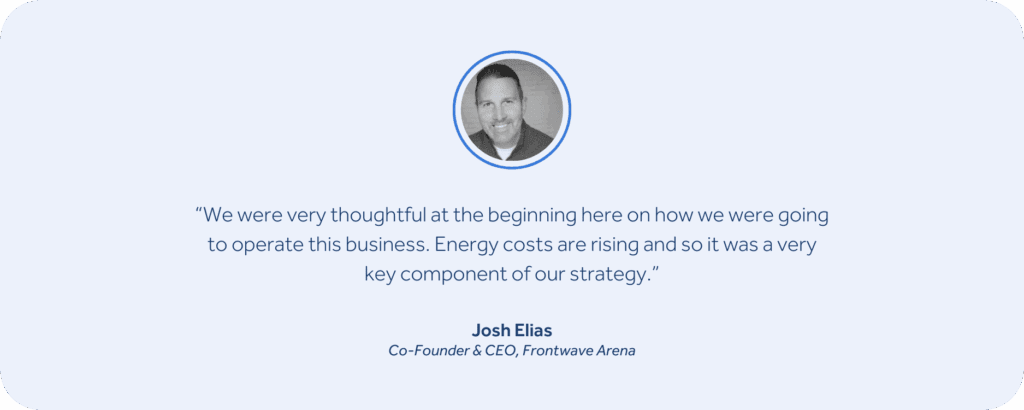
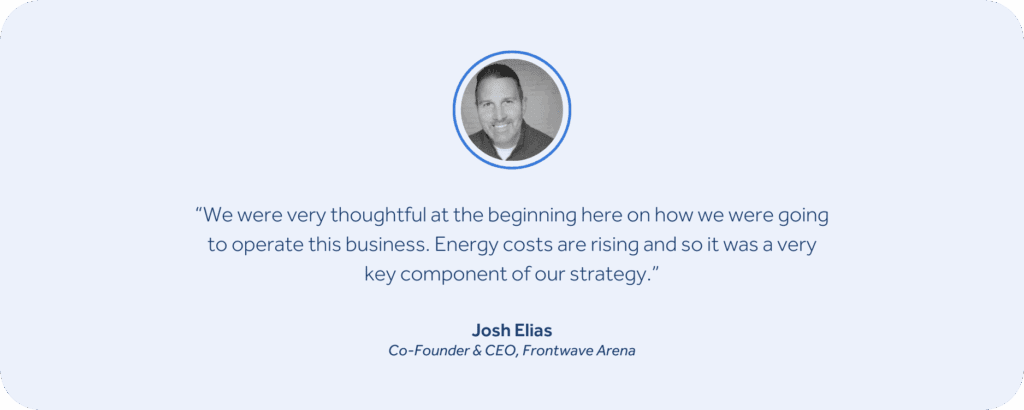
Project Challenges
As seen in any large-scale commercial venture, especially in the context of a newly constructed facility, engineering obstacles surfaced during the development phase. Mayfield addressed these through collaboration with various stakeholders and strategic value engineering.
Below are four significant challenges faced by the project, and how Mayfield successfully overcame them:
- Restricted physical space: The electrical courtyard (designated outdoor area for electrical apparatus like the utility transformer and primary service panel) was congested.
Mayfield collaborated with the energy storage system provider to acquire 9540A test report data, which the AHJ utilized to permit reduced separation between the battery and other electrical devices in the courtyard. - Quick shutdown adherence: National Electrical Code Section 690.12 mandates rapid shutdown capability for rooftop systems.
To adhere to the Code, Mayfield opted for APSmart RSD-S-PLC module-level rapid shutdown devices and spaced inverter conductors 6”-8” apart to prevent power line communication interference. - Numerous key stakeholders: DSD Renewables manages the project under a PPA, Baker Electric constructed and obtained permits for the project, while Mayfield engineered the initiative. All parties accommodated requirements from Frontwave Arena, the local utility, and the AHJ.
Mayfield coordinated with all stakeholders and submitted plans for various rounds of revisions to ensure all perspectives were taken into account. - Creating a system for a newly constructed facility: The solar-plus-storage system was designed for a building that was presently under construction, thus there were no “as-built” blueprints available. Additionally, there wasn’t any historical electrical load data Mayfield could utilize to determine the size of the solar array and energy storage container.
Mayfield and Baker Electric collaborated with Frontwave Arena to estimate electrical loads for sizing the energy storage system and PV array.
Outcomes
After multiple rounds of evaluations and modifications with the City of Oceanside, San Diego Gas & Electric, and DSD Renewables, Baker Electric successfully acquired a permit on October 15, 2024, and initiated construction in December.
At the time of this writing, the project has been commissioned and is undergoing final inspections. Energization is expected in May 2025.
Mayfield Renewables is an engineering consultancy focused on commercial and industrial PV and microgrid engineering. Contact us now for a consultation.

